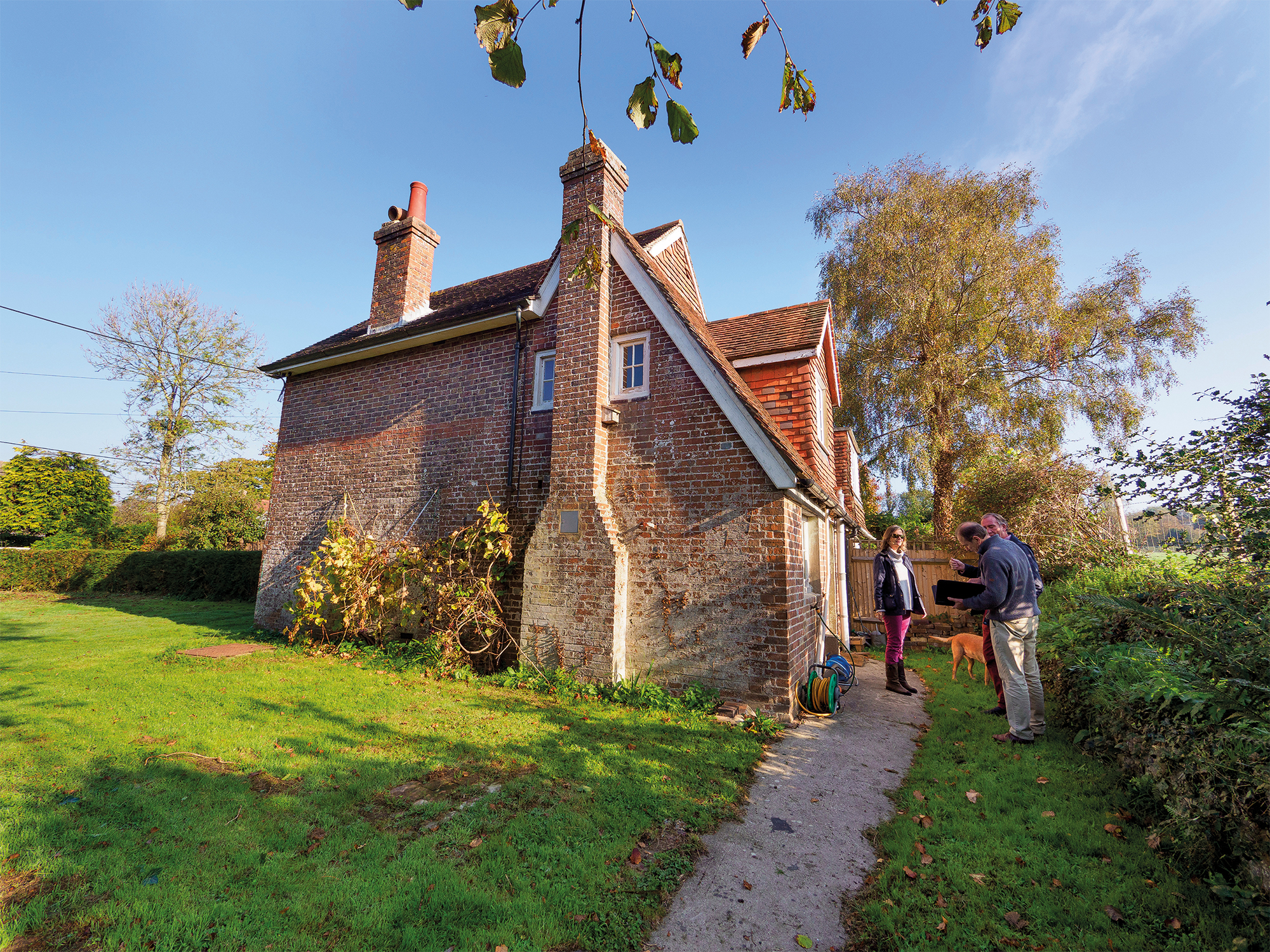Following their return from living and working overseas, Anne Greetham and Stuart Birkbeck have found an attractive semi-detached cottage on the edge of the hamlet of Muddles Green, part of the dispersed village of Chiddingly in East Sussex.
The house seems to have potential for extension, as well as an intriguingly long side garden that might allow for development. The couple would like to make the most of this superbly located property and investigate if it’s what they’ve been looking for.
The property
The plot’s position suits Anne and Stuart perfectly, being on the edge of the village within walking distance of a local pub.
The house is set off an unmaintained narrow public road, which serves a scatter of houses. It’s less than 200m long and runs from the main street out to meet another lane.
The property in question is at the far end of the road from the village centre, which features quirky charms such as an old toll booth that now serves as a barbers.
This is a period semi-detached property with two bedrooms. It’s currently far too small to meet Anne and Stuart’s needs, as they want enough space to accommodate their two grown-up children from time-to-time.
Unusually, the building is set right at the back of the plot with large front and side gardens. The rear elevation faces south-east over attractive countryside with distant views of the south downs.

There’s a rather tumble-down garage to the side of the house. The adjoining property has a flat roofed side extension, with a dormer to the rear – a design not entirely sympathetic to the bold twin gables of the original front elevation.
Building a side extension
Given the other half of the semi has a side extension, it’s likely that Anne and Stuart’s house could benefit from one too, although a pitched roof would better complement the existing design.
The plot is in a conservation area, so permitted development rights are limited to rear additions only – but this wouldn’t be feasible here due to the close proximity to the boundary.
This means any extension would need formal permission. Anne and Stuart have already submitted an application and are awaiting the outcome.
Their design is set a little below the current ridge height and back from the existing front elevation, both strategies that are generally favoured by planners who expect extensions to appear subservient to the host property.
The addition would transform the small cottage into a four bedroom family house with good circulation and a more open-plan approach to the living space at ground floor – in short, exactly what they need.
As well as the extension, Anne and Stuart’s plan includes a large three-bay garage to the side of the house, set forward to not obstruct views. This would replace the existing garage.
So far, the parish council has expressed support for the application and there are no neighbour objections – a good start.
The side garden
This stretches to some 50m of roughish lawn with overgrown hedgerows and some trees around the periphery. There’s a ditch down the rear boundary, which cuts across the end of the plot, beyond which is an access into the adjoining field.
The land is more-or-less level and could be accessed from the same lane as the house, via a new entrance through the overgrown hedge. It’s somewhat superfluous to the house and could readily accommodate another dwelling without the properties being cramped or overlooking each other.
The question is whether a new house in this edge of a village conservation area would gain planning permission. To answer that we need to take a look at the somewhat complex local planning policy situation.
Explore more from this series:
The post Land Appraisal: Semi-Detached House in Conservation Area appeared first on Build It.
Article reference Land Appraisal: Semi-Detached House in Conservation Area
No comments:
Post a Comment